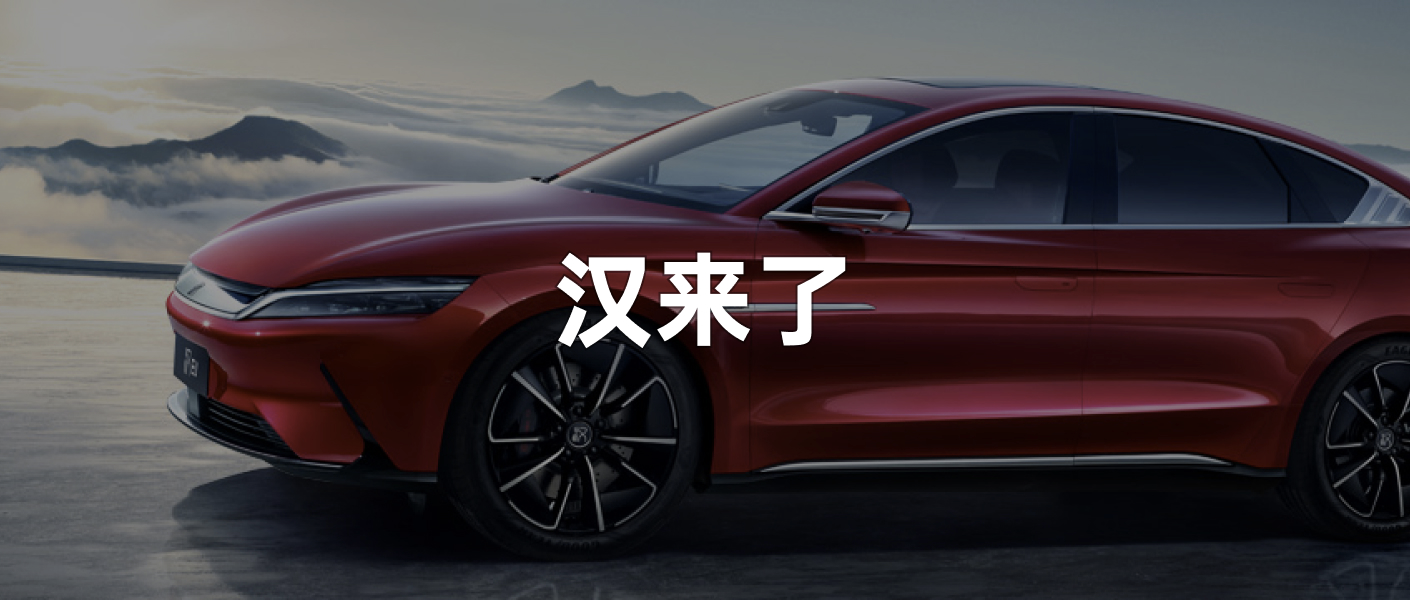On the evening of July 12th, after more than half a year of preheating and promotion, BYD Han finally held a listing conference tonight.
For consumers, the previously hidden price of Han was finally revealed today. In addition to the price, the car-machine interaction endorsed by Huawei also made the conference very eye-catching.
Pure Electric + Hybrid, 4 configurations
Straight to the point, BYD announced the prices of the 4 Han models at this conference:
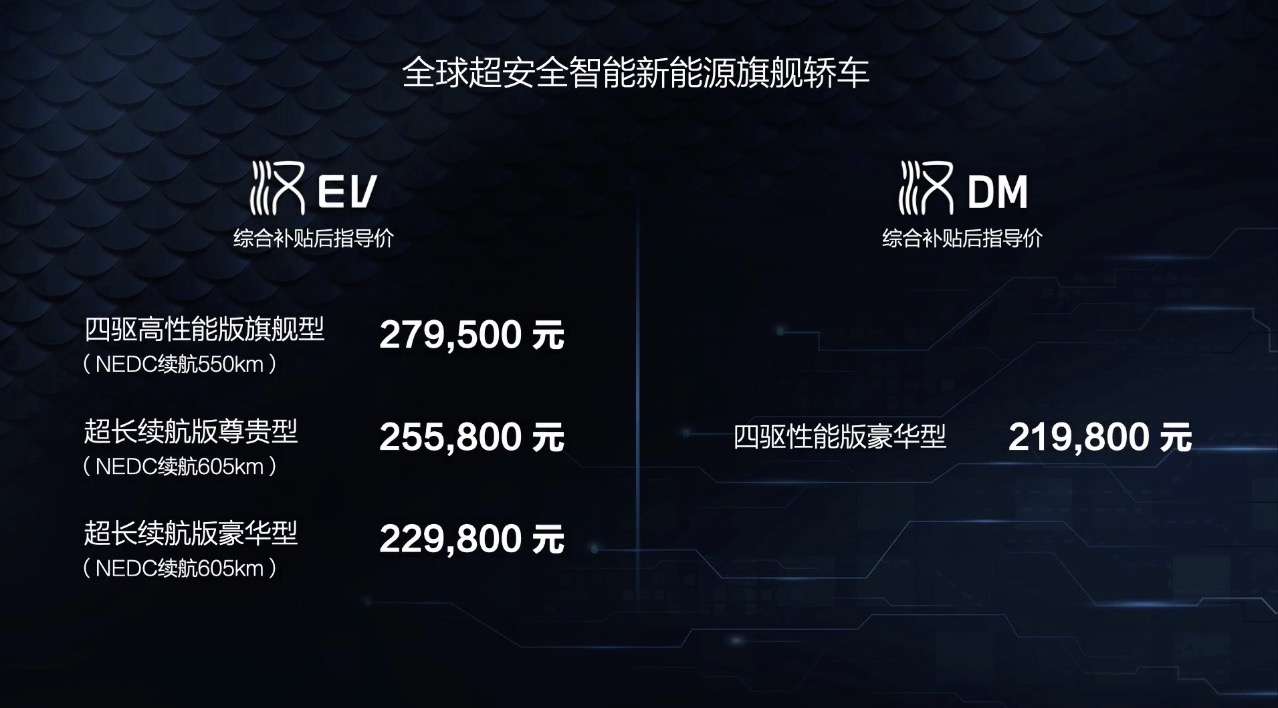
First of all, let’s take a look at the Han EV pure electric model, which has names that are closely related to the Starbucks logo:
- Four-wheel drive high-performance flagship model 279,500 yuan (NEDC 550 km)
- Extended-range luxury model 255,800 yuan (NEDC 605 km)
- Extended-range luxury model 229,800 yuan (NEDC 605 km)
Now let’s talk about the Han DM hybrid model:
- Four-wheel drive performance luxury model 219,800 yuan (NEDC 81 km)
To sum up, the overall price range of the Han series covers most of the 200,000-300,000 yuan range. Even the top configuration model has a price tag of more than 300,000 yuan. First of all, Han is cheaper than Tesla Model 3 and Xpeng P7 in terms of price. Secondly, even if the subsidies are reduced on July 22nd, Han can still receive subsidies. The different configurations also achieve enough differentiation in key demands such as endurance and performance, with precise planning.
If you already know the above model configurations or are a deposit-paying potential car owner, you can skip the content after this paragraph.
If you are not familiar with the main configurations of the above models, then let’s review them together:
Battery and Endurance
For the Han EV model, BYD has equipped its latest “Blade Battery.” The official claim is that the energy density of the Blade Battery has increased by 50% compared to the previous “traditional iron battery.” The Blade Battery with a capacity of 77 kWh, equipped on the extended-range model and high-performance model, provides a mileage of NEDC 605 km and 550 km, respectively.
In addition, with a powerful electronic control system, Han’s charging power is also quite impressive. The maximum charging power of 100 kW can enable Han to replenish 135 km of energy in just 10 minutes.
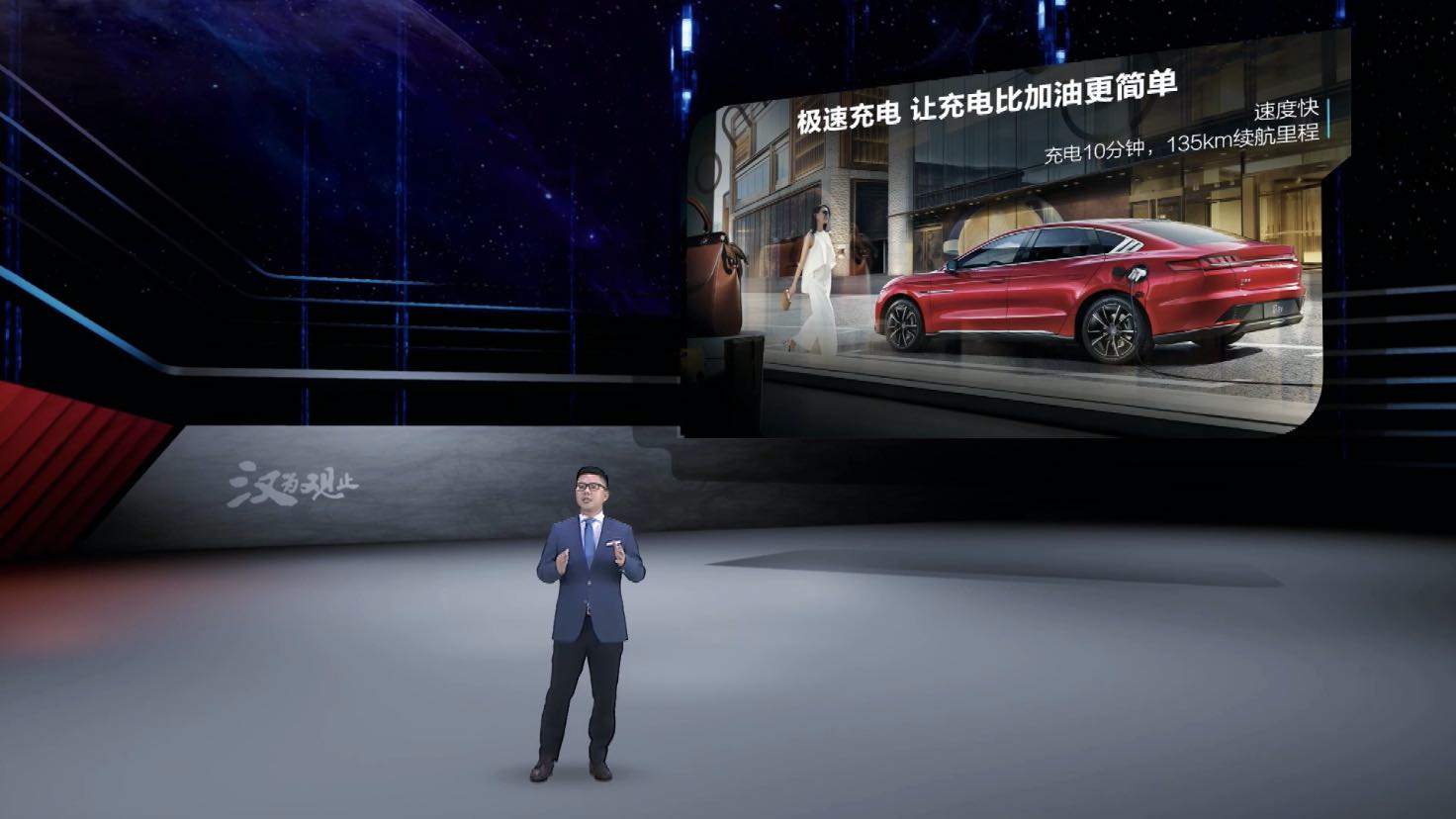
The Han DM model uses a 622-formula ternary lithium battery with a capacity of 15.4 kWh and a mileage of NEDC 81 km.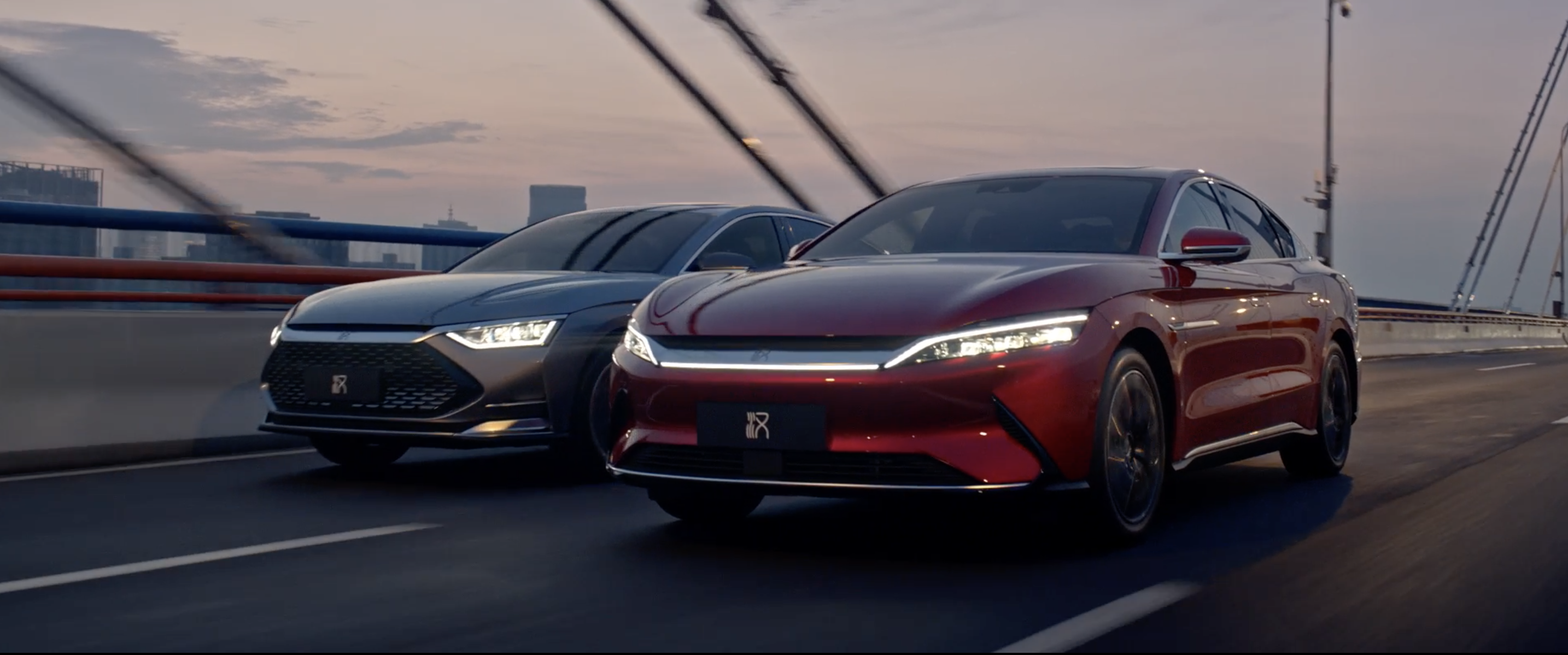
It’s worth mentioning that BYD has specifically stated at the launch conference that the range of the Han model is not just “virtual,” and the range has been optimized from air conditioning efficiency, insulation, and kinetic energy recovery. In short, the range is very practical.
Power Configuration
The 4WD high-performance version of the Han EV is equipped with a combination of a front 163 kW and a rear 200 kW permanent magnet motor, and the acceleration from 0 to 100 km/h is 3.9 seconds. The other front-wheel-drive versions only have a 163 kW permanent magnet motor on the front axle, corresponding to zero to 100 acceleration of 7.9 seconds.
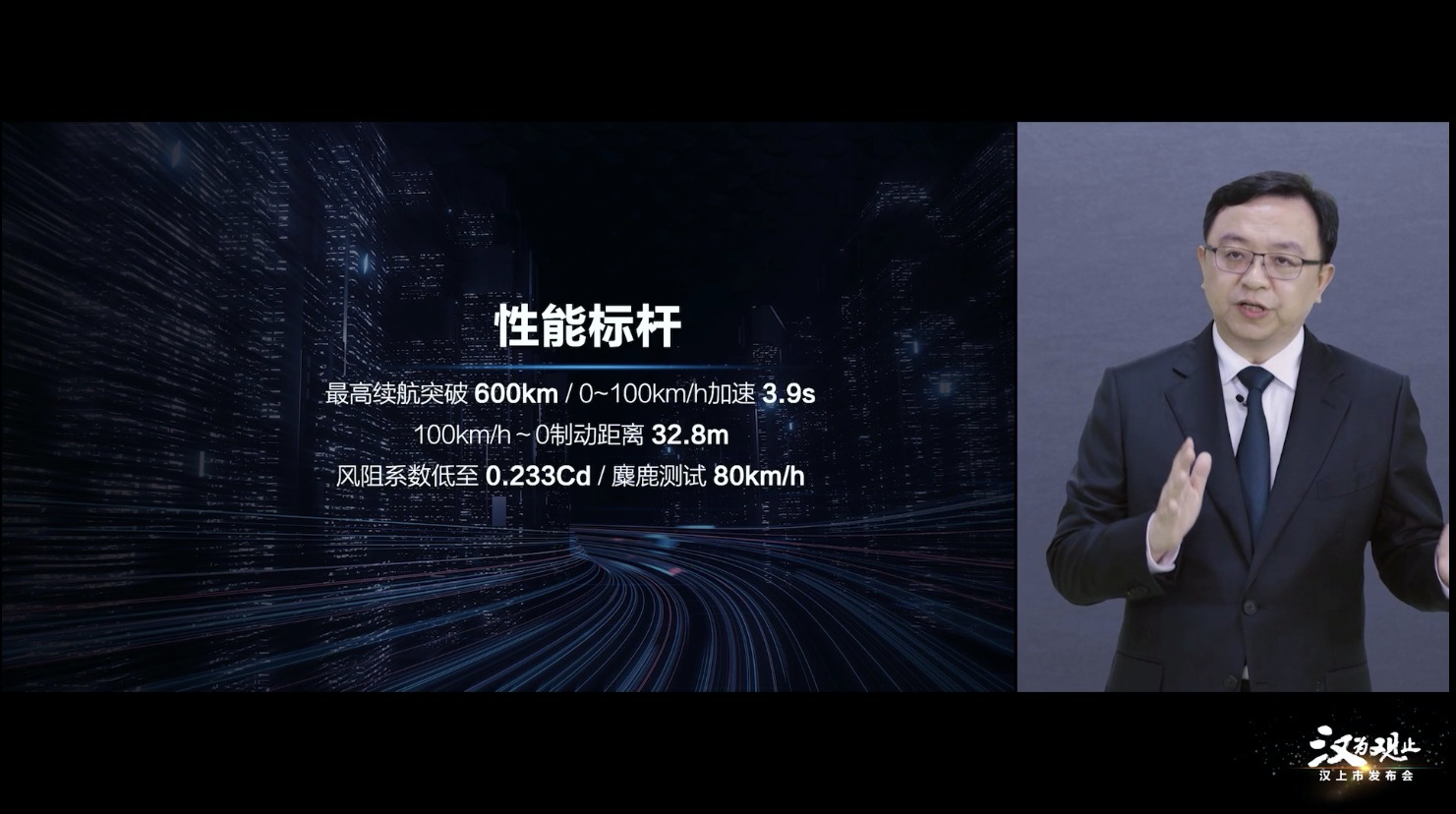
The Han DM is equipped with a hybrid combination of a 180 kW permanent magnet motor and a 2.0-liter engine. The engine drives the front wheels, and the motor drives the rear wheels, with a comprehensive output power of 321 kW and a zero to 100 km/h acceleration of 4.7 seconds.
In brief, as the main model of Han EV, the power data of the 4WD high-performance version is impressive, and the acceleration has also entered the 4-second club. The luxurious configuration of the double permanent magnet motor also makes people full of expectations for its actual range. The power difference between it and the front-wheel-drive models with a lower price threshold is slightly large, but the 7.9 seconds acceleration is also a good level among cars in the entire price range.
The power configuration of Han DM is relatively “classic.” The 4.7-second acceleration is comparable to the performance of top-of-the-line models of the Tang (4.3 seconds) and Song (4.7 seconds) series in the past. The powertrain of the fuel part is still the 2.0-liter engine and 6-speed dual-clutch transmission inherited from the first generation of Tang. It is said that there will be better fuel consumption performance compared to before.
This reminded a potential car owner who hoped that Han DM could be equipped with a new powertrain:
“Don’t tell me, BYD is quite like McLaren, they all use engines that are so powerful that they don’t need to be replaced on new cars.”
Other Configurations
Han is as generous as ever in terms of functional configuration, and I will skip the common configuration and talk about a few interesting ones:
Fuyao’s Black Technology Glass Developed for Han
This glass is said to have very good sound insulation, heat insulation, and anti-ultraviolet functions, making it a product with high technological content.
Rear Passenger Control
There is a touch screen in the middle of the rear seat of Han. This touch screen can adjust the seats of the rear and co-pilot, and can also adjust the media playback content of the center console.
NFC Key
Huawei has developed a mobile NFC key for Han. Touch the rearview mirror to unlock the car, and it can still work even if the phone has no network and no power.
Several Typical Solid MaterialsTranslated English Markdown text with HTML tags preserved:
The BYD Han – High Strength Hot-Formed Steel, Nappa Leather Seats, and Frankfurt Holztech
The BYD Han is the domestic vehicle that uses high-strength hot-formed steel the most, exceeding 100 kg. The seats in the car are made of double-stitched Nappa cowhide. The wood trim in the car is made of wood from trees over 80 years old from the western Frankfurt and refined with complex processes such as silk-screen printing. The vehicle is filled with NVH soundproofing materials throughout.
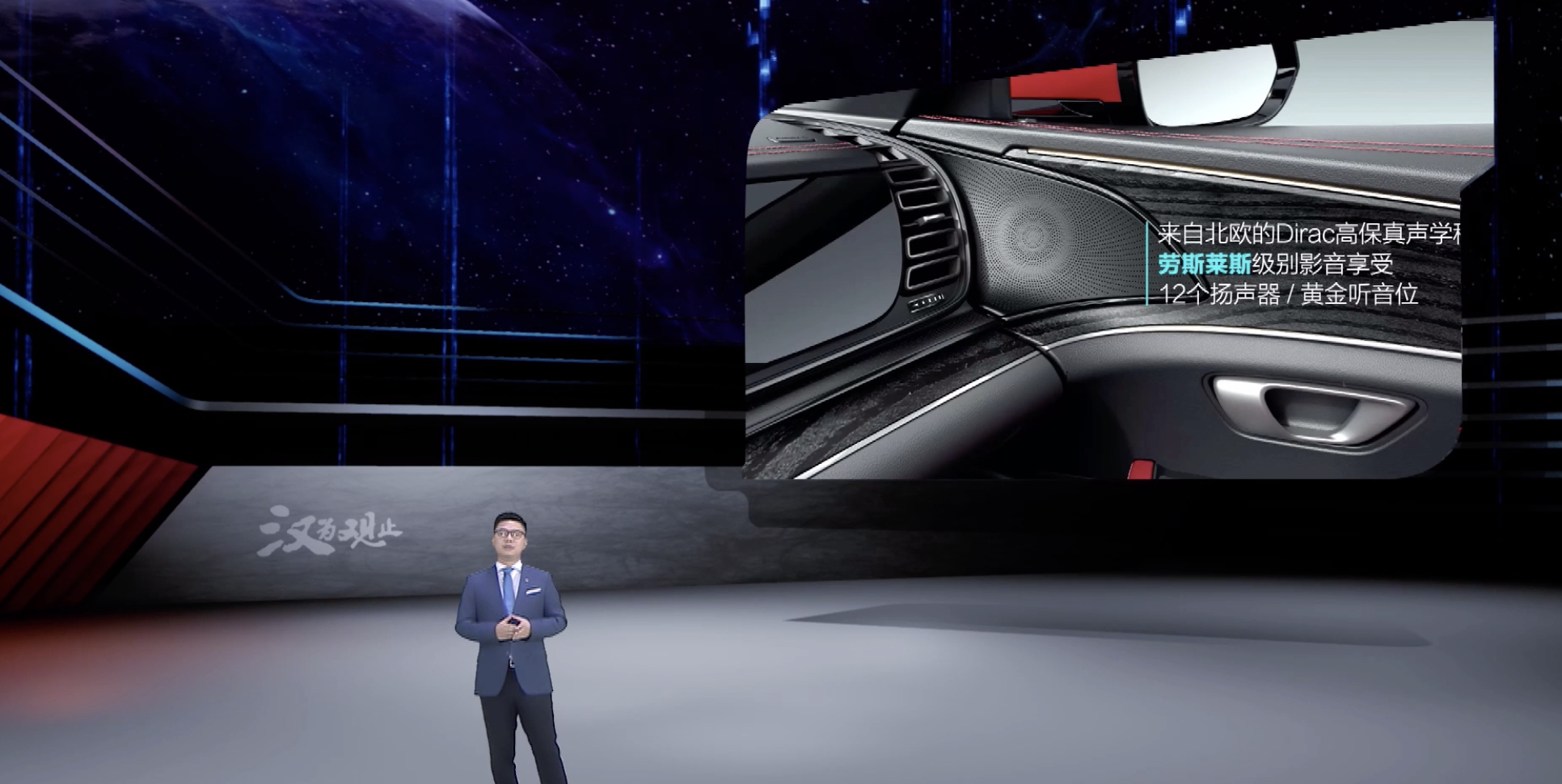
ADAS and HiCar
DiPilot First Appearance, Chairman Wang Chuanfu Takes the Initiative to Communicate
When Chairman Wang Chuanfu brought up the topic of intelligence at the press conference, he emphasized “what kind of intelligence is the intelligence that everyone needs.” As an example, Chairman Wang used his high-pitched voice to ask, “What kind of intelligence is it if a certain automaker’s vehicle cannot even recognize a white object in a high-speed driving scenario?”
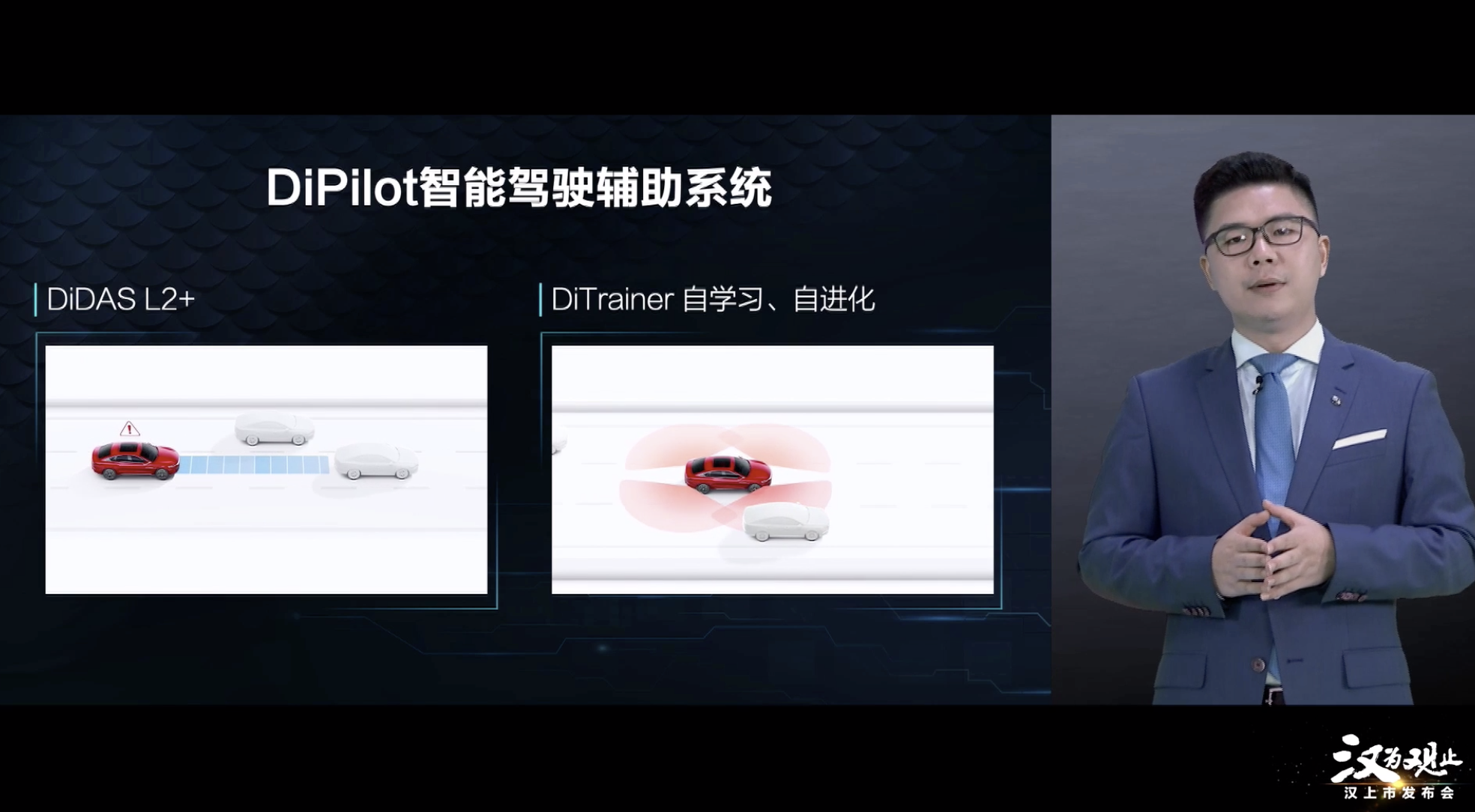
Then, the DiPilot (DP for short) ADAS system launched by BYD was introduced.
According to our collected information, the hardware of this system consists of three millimeter-wave radars, and twelve ultrasonic radars and five cameras (one monocular camera and four panoramic cameras). The functions that this system can currently achieve include:
- Automatic emergency braking assistance system
- Forward collision warning system
- Adaptive cruise control
- Low-speed following mode
- Traffic congestion assistance
- DiTrainer machine learning
- Lane departure warning system
- Lane keeping system
- Blind spot detection
- Automatic parking
- Remote driving
The BYD Han is very generous on ADAS and other intelligent configurations. The full range comes with full-speed domain ACC and active lane-keeping. Moreover, it supports whole-vehicle OTA upgrades for the first time. Furthermore, the OTA upgrade PPT specially mentioned that it is free.
Yes, it sounds like there are a lot of cool things. But in fact, many of them have already appeared in BYD or other competitive models. However, I am still very interested in the “Automatic Parking,” “Traffic Congestion Assistance,” and “DiTrainer Coaching Mode.”
Regarding DP, I have always felt that the level of ADAS is determined by the software algorithm over the hardware. The actual experience depends on practical testing, and I won’t comment much on this.
In addition, the brand that has difficulty recognizing the white object seems to be recognized by everyone as the leader in ADAS. It is commendable to mock the champion when entering the stage, but I hope they will not be slapped in the face.
D-Link 3.0## Introduction
In terms of user experience, Han uses its sub-brand D-Link 3.0 as the in-car system. The 3.0 version has updated its UI design with a simpler and more beautiful interface, which includes more animations. This in-car system is also equipped with the second generation of in-car karaoke system with wireless microphones (which is considered by some people to be a somewhat embarrassing feature). It also supports account login, which can save personalized settings under the account.
5G
At the press conference, Huawei’s Richard Yu mentioned that Huawei has provided Han with the first 5G communication module for production vehicles, which provides strong hardware support for its communication.
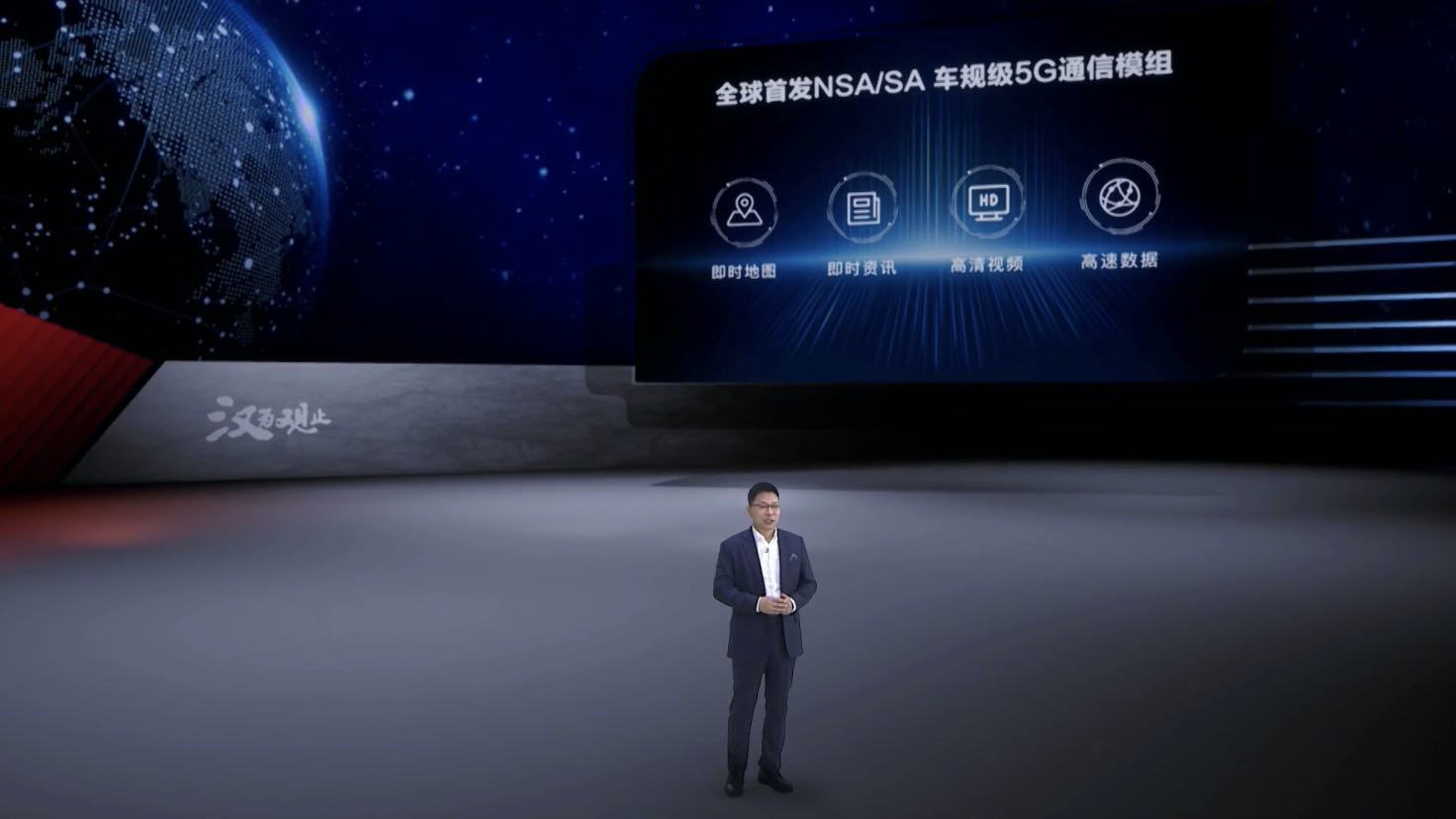
HiCar
In Mr. Yu’s introduction, HiCar is the mobile car connectivity system based on HarmonyOS, and can be roughly understood as the Huawei version of CarPlay. Mr. Yu mentioned that HiCar has more applications than CarPlay and uses a seamless Bluetooth self-connection mode. As for the 1 + 8 + N interconnection framework of HiCar, I will not elaborate here.
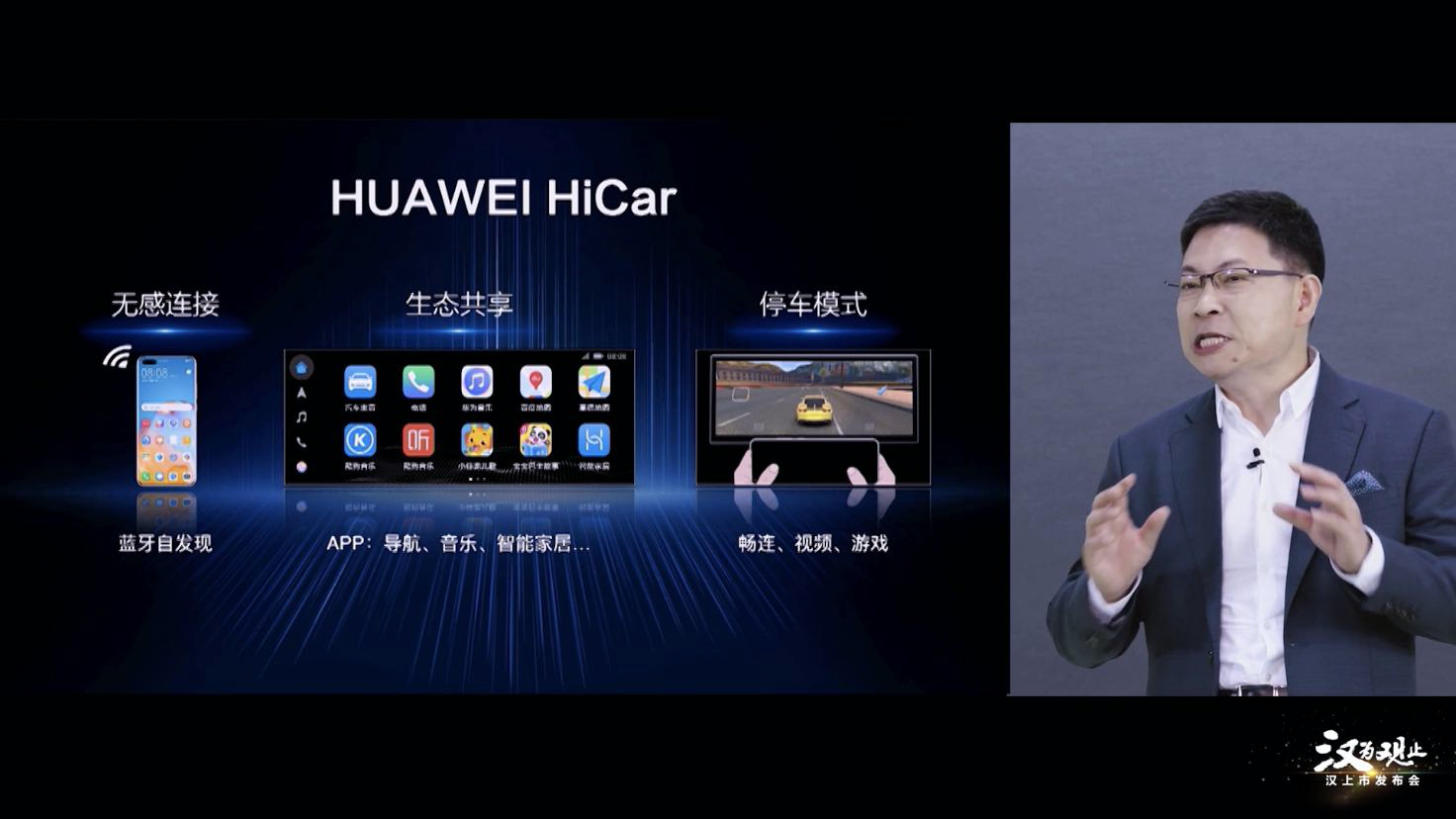
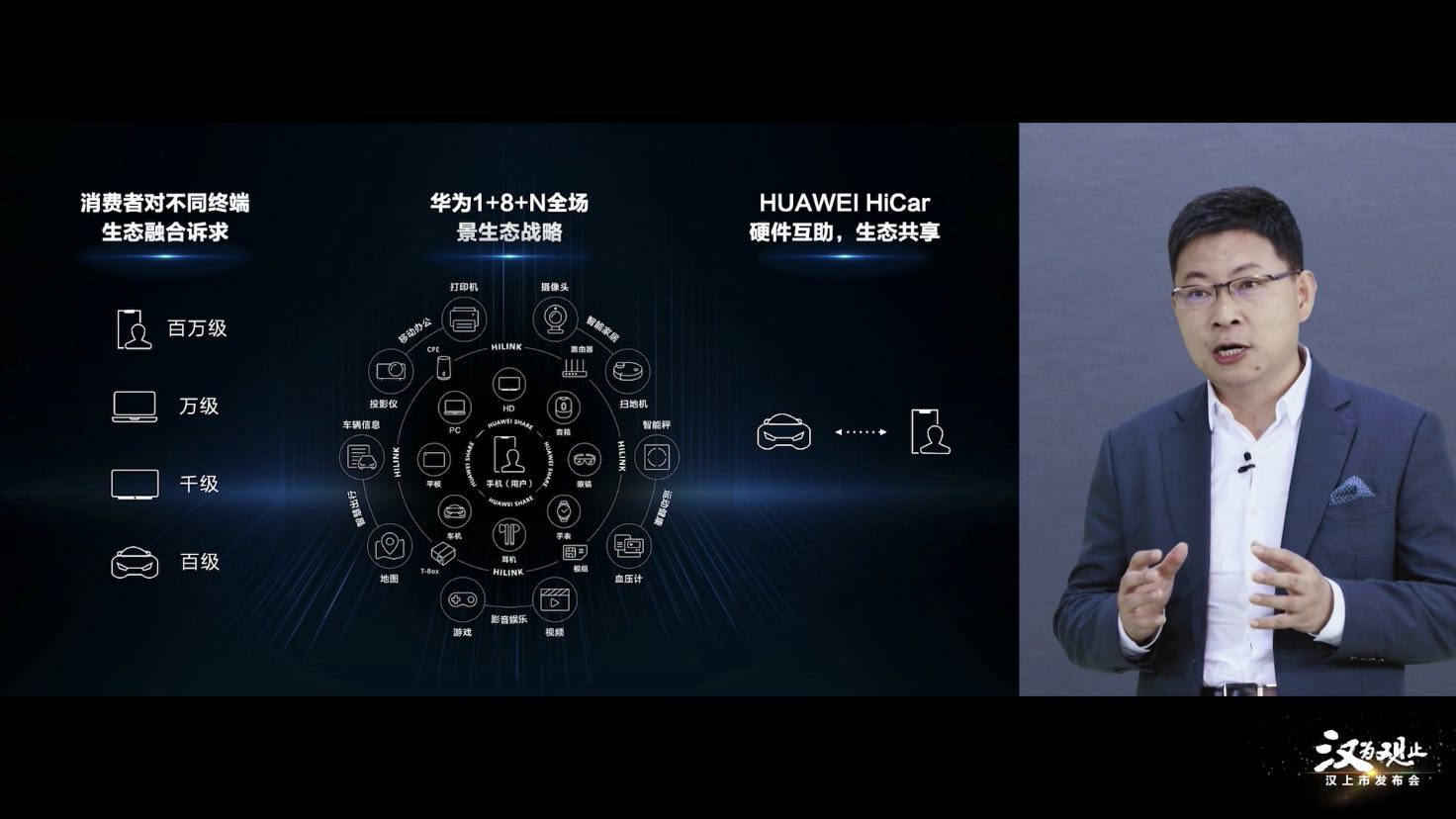
Conclusion
Good product and pricing
As BYD’s flagship sedan, Han is well-promoted, with new features such as blade battery, new interior and exterior design, first-time equipped DP ADAS and whole-vehicle OTA, which give it enough confidence and competitive hard power compared with its competitors, such as P7 and Model 3. In terms of pricing, Han is even more affordable than its peers. In this segment market, it can be considered as an excellent choice.
A crucial turning point under the crisis
As of June, BYD’s new energy vehicle sales have fallen for 12 consecutive months. In June 2020, BYD’s new energy vehicle sales fell to 14,165 units, down 46.96% from 26,571 units in 2019. The cumulative sales from January to June have decreased by 58.34% year-on-year.
In 2019, BYD dethroned Tesla as the global new energy vehicle sales champion for four years. In June 2020, domestic Model 3 sales even exceeded the sales volume of all BYD’s new energy vehicles.In the face of the overall declining economic environment and emerging challengers, BYD urgently needs a morale-boosting flagship product.
And the Han series is set to be that product. According to the latest official announcement from BYD, the Han series has already received over 20,000 orders both online and offline, which certainly indicates a strong start.
But this is just the beginning. The second generation of the Tang, which also received positive market feedback at its initial release, saw declining sales after only two years. In comparison, the Tesla Model 3, which was released in 2016 at a similar price point, received over 300,000 global orders within the first week. The market is indeed real and ruthless.
Ultimately, as a leading figure in China’s new energy industry, whether BYD will thrive or decline in this market reshuffle remains to be seen, and it all hinges on the performance of the Han series in the coming years.
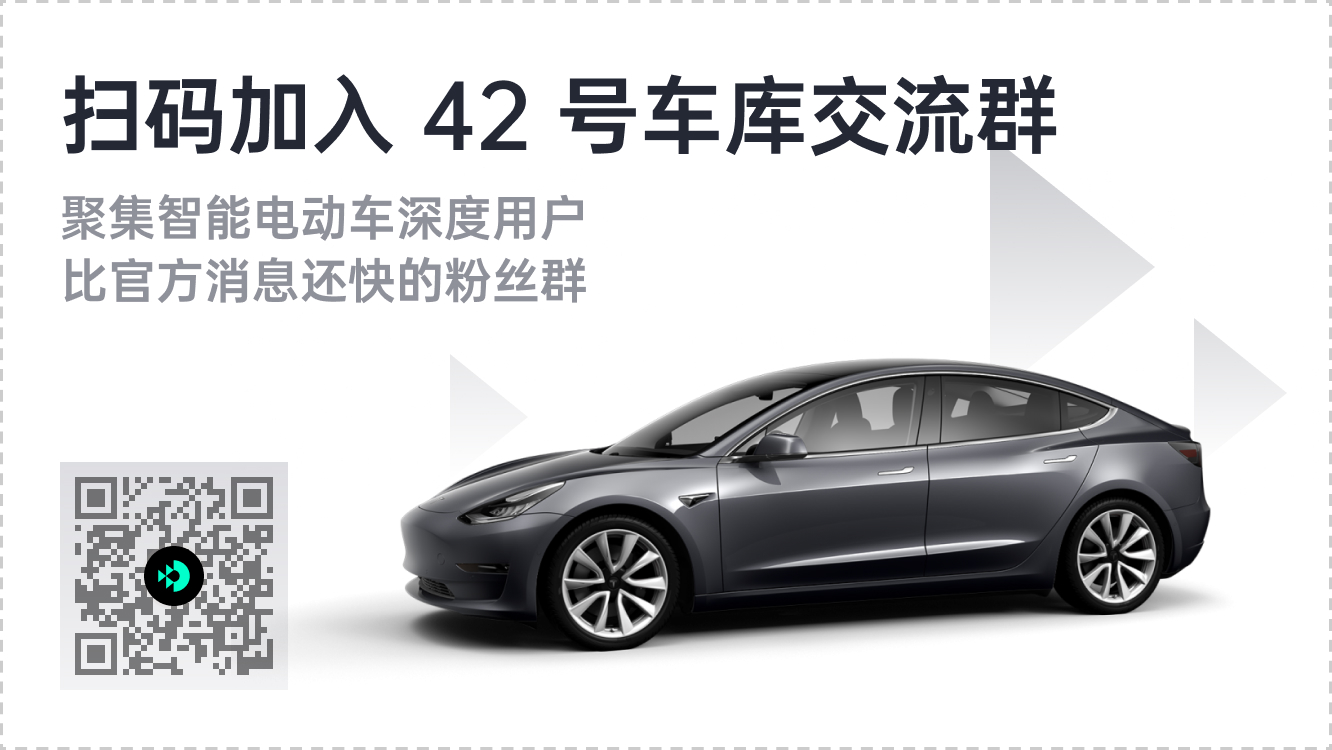
This article is a translation by ChatGPT of a Chinese report from 42HOW. If you have any questions about it, please email bd@42how.com.
